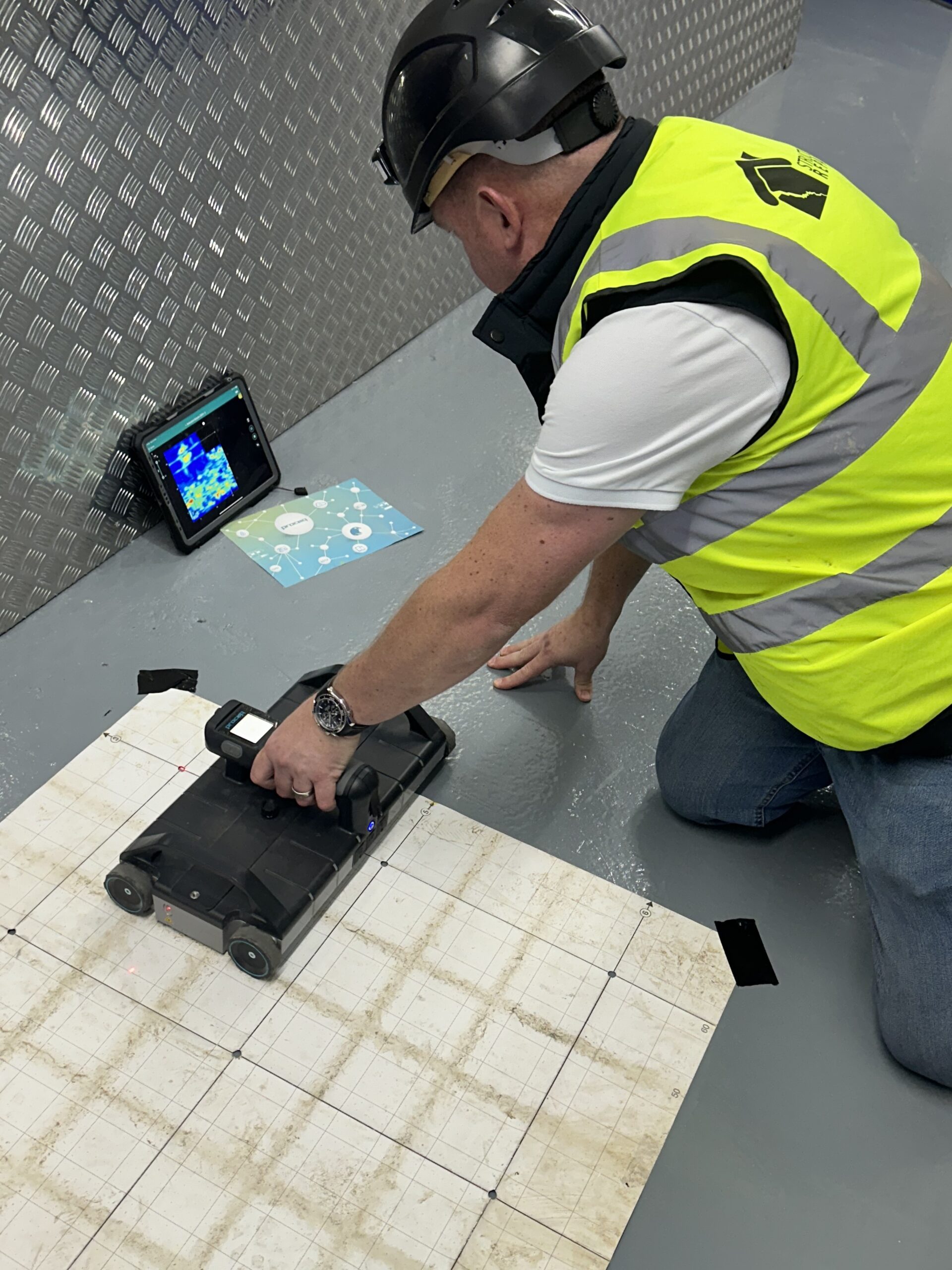Picking the Right Concrete Scanning Equipment
Picking the Right Concrete Scanning Equipment
Blog Article
Unveil the Transformative Power of Concrete Scanning in Optimizing Effectiveness and Safety
Concrete scanning has become an essential device in the building and construction sector, supplying unmatched advantages in enhancing project effectiveness and guaranteeing safety and security requirements. By utilizing innovative innovation, concrete scanning permits experts to see beyond the surface area, uncovering surprise complexities that could affect the architectural stability of a structure. The transformative power of concrete scanning hinges on its capacity to offer detailed insights and real-time information, revolutionizing how jobs are planned and performed. As we explore the ins and outs of this cutting-edge method, a globe of possibilities opens, showcasing a new era of building methods that prioritize accuracy and security.
Significance of Concrete Scanning
Guaranteeing the structural honesty and security of construction tasks starts with the essential action of carrying out extensive concrete scanning. Concrete scanning is a non-destructive method made use of to find and map subsurface elements within concrete frameworks. This process is important in identifying possible risks, such as rebar, post-tension cables, and avenues, that may be concealed within the concrete. By using advanced modern technologies like ground-penetrating radar (GPR) and electro-magnetic induction, construction groups can precisely situate these aspects without causing any kind of damage to the framework.
Additionally, concrete scanning aids in maximizing job timelines and budget plan by preventing unexpected costs and delays that may develop due to unpredicted blockages within the concrete. Eventually, spending in complete concrete scanning is an aggressive strategy that boosts both performance and safety in building and construction tasks.
Just How Concrete Scanning Functions
Concrete scanning runs as a critical device in building jobs by utilizing sophisticated innovations to spot and map subsurface elements without causing structural damage. Ground Penetrating Radar (GPR) and Electromagnetic Induction (EMI) are two main techniques made use of in concrete scanning. GPR jobs by sending out high-frequency radar pulses into the surface, which recuperate when they encounter subsurface objects or spaces. The time considered the signal to return indicates the deepness and location of the things. EMI, on the other hand, makes use of electromagnetic areas to determine variances in product structures, such as determining rebar or conduits within concrete frameworks.
Throughout the scanning procedure, the data accumulated is assessed in real-time, enabling instant recognition of prospective hazards or obstacles underneath the surface area. By employing these sophisticated technologies, concrete scanning significantly decreases the risk of costly problems and injuries on construction websites.
Advantages of Concrete Scanning
Using sophisticated scanning innovations in construction projects offers a wide range of advantages, enhancing both performance and safety and security on-site. Among the key advantages of concrete scanning is the ability to find and locate embedded things such as rebar, post-tension cable televisions, and avenues precisely. resource By recognizing these elements prior to boring or reducing into concrete structures, the danger of unintentional strikes read review is significantly minimized, protecting against prospective injuries to employees and damages to the framework itself. Concrete scanning aids in planning and designing more properly, as it gives accurate info about the location and deepness of architectural elements.
Study: Concrete Scanning Success

In one more case, a building company used 3D concrete scanning to analyze the problem of aging concrete structures in a historical structure. The in-depth scans given important understandings into the level of degeneration and assisted focus on maintenance initiatives successfully. By proactively attending to areas of problem determined with scanning, the firm had the ability to extend the lifespan of the framework and ensure resident safety and security.
These instance studies highlight the transformative power of concrete scanning in boosting performance, precision, and safety and security in construction jobs.
Carrying Out Concrete Scanning in Projects
Carrying out sophisticated scanning modern technologies throughout construction projects has become increasingly necessary for boosting accuracy and safety and security. By integrating concrete scanning into project planning and implementation, building and construction teams can determine prospective threats, such as rebar or post-tension cable televisions, concealed within concrete frameworks. This aggressive strategy minimizes the risk of accidents, delays, and expensive rework, eventually bring about extra efficient task timelines and budgets.
To apply concrete scanning properly, task managers must collaborate carefully with experienced scanning specialists to figure out the most suitable scanning strategies for the particular project demands. Engaging scanning specialists from the onset of a task allows the group to produce comprehensive scanning strategies that deal with key locations of issue and ensure thorough information collection.
Additionally, incorporating concrete scanning right into routine project operations can improve decision-making processes, as real-time check data provides prompt understandings into the problem of concrete structures - Concrete Scanning. This data-driven method facilitates educated analytical and enables teams to make changes immediately, fostering a culture of performance and safety throughout the job lifecycle

Verdict
Finally, concrete scanning plays a crucial duty in enhancing performance and safety in building and construction projects. By using sophisticated modern technology to map and identify out underlying structures within concrete, this procedure helps to stop pricey mistakes, guarantee architectural stability, and decrease threats on site. With the ability to discover concealed components and give exact information, concrete scanning proves to be a useful tool for enhancing task end results and making the most of general success.
Concrete scanning is a non-destructive technique utilized to discover and map subsurface aspects within concrete structures. Furthermore, concrete scanning assists in enhancing job timelines and budget plan by preventing unexpected costs and delays that may arise due to unanticipated obstructions within the concrete. One noteworthy case research involves a large-scale restoration project where concrete scanning played an important duty in guaranteeing project success.In an additional case, a construction firm used 3D concrete scanning to assess the condition of maturing concrete frameworks in a historic structure. By integrating concrete scanning into task planning and execution, building and construction teams can identify possible risks, such as rebar or post-tension cable televisions, concealed within concrete structures.
Report this page